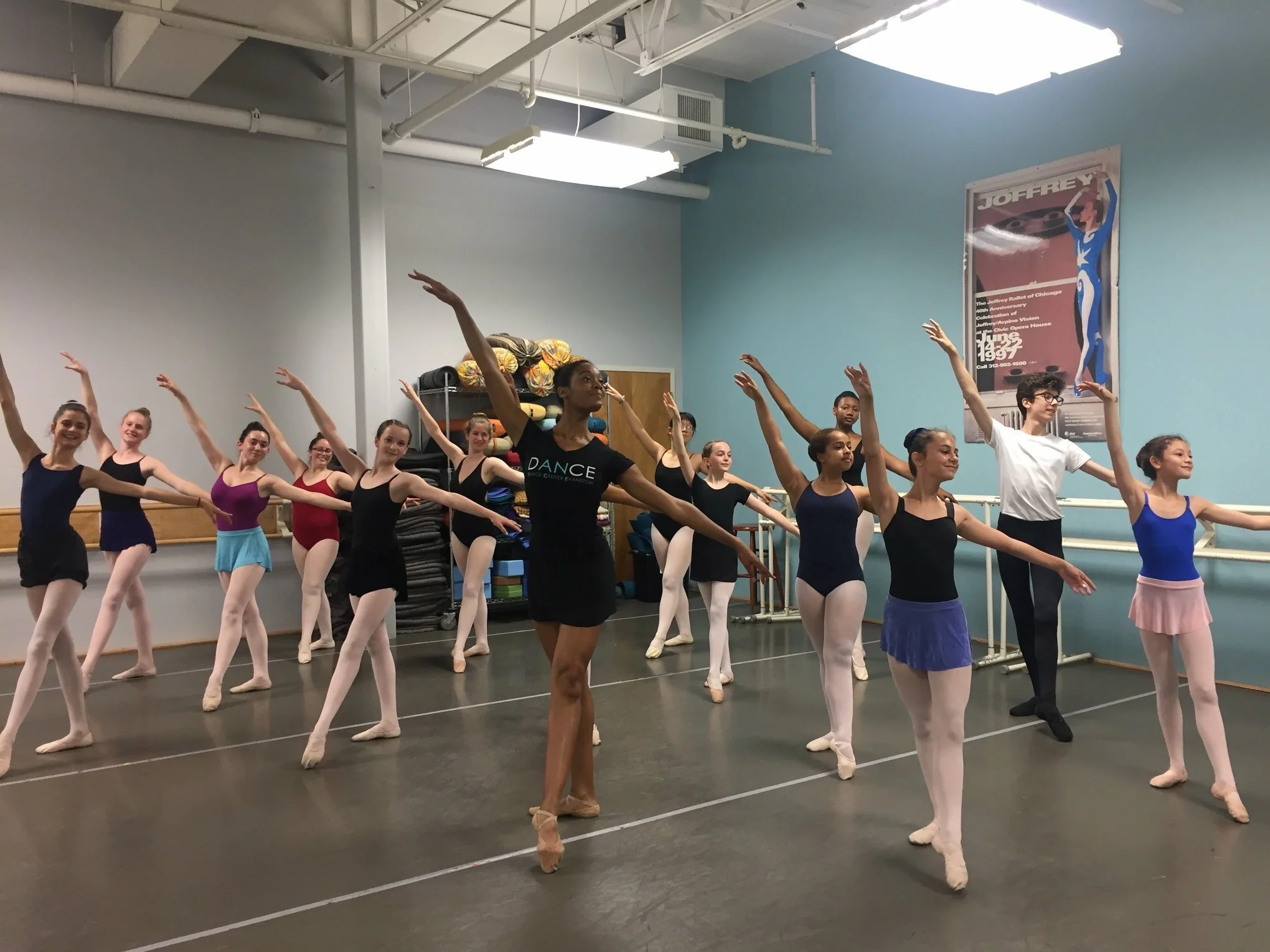Teaching Philosophy
I encourage my students to explore all of the different identities they take on in dance spaces: “artist,” “athlete,” “mathematician,” “physicist,” and “philosopher.” We are artists first, and our art is supported by our athleticism. The precision demanded by the athletic requirements of dance calls on our inner mathematicians and physicists to note how our unique bodies adapt to the movement. Finally, in thinking critically about dance and other outside influences coming with us into class, we are philosophers unfolding the ‘why’ of our dance journeys.
Ballet
Ballet
Methodology
I believe that ballet is a dance form for any and everyone, and it’s history, including its practice in non-Eurocentric cultures, is a testament to that. As my first movement language, ballet has been my gateway into many other forms of dance, and I encourage students to think about the connectivity between the principles of musicality, body awareness and alignment, and dynamicism present with ballet with other forms of dance and other aspects of life. My classes also emphasize the different philosophies between the various ballet techniques and how understanding these different approaches enriches our perspectives and allows each person to navigate the technique with their uniques strengths, weaknesses, and needs in mind. I approach ballet pedagogy holistically and historically, promoting a well-rounded learning environment where students feel challenged and empowered.
Specializations
Classical Ballet & Pointe Technique
Cecchetti (Certified in Grades I-V)
Vaganova
Non-Syllabus (including French and Bournonville influences)
Neo-Classical Ballet
Including influences from the Balanchine methodology
Contemporary Ballet
Including influences from the LINES and Foresythe methodologies
Ballet History
Including my original class “History of the Black Ballerina,” taught exclusively at the University of Michigan.
Bomba
Bomba
Methodology
I began studying Bomba, an Afro-Puerto Rican dance and music form, as a student at the University of Michigan and performed with a student-led ensemble. Through funding from the Center for World Performance Studies, I traveled to San Juan to research Bomba’s contemporary practice and interview Bomba masters such as Maribella Burgos and Jesús Cepeda. I was struck by the connection between Black experiences in Puerto Rico and in mainland United States. These experience have greatly influenced how I teach Bomba in a way that honors its origins as well as its continuous innovations.
Class Types:
Bomba (Improvisational)
Typically with live drummers, I cover the history of Bomba teach foundational steps. We focus on the etiquette of dancing (and singing) in a Batéy and moving through different movement ideas spontaneously.
Bomba (Folklórico)
Much like improvisational Bomba, I provide historical context and teach foundational steps. The class then learns choreography that uses this movement vocabulary while exploring choreographic elements like formation changes and cannons.
Methodology
I primarily studied Jazz under Randy Duncan at the Chicago Academy for the Arts and was introduced to what can be classified as Afro-Jazz: a fusion of Jazz and West African, Central African, Afro-Brazilian, and Afro-Caribbean dance forms. While primarily situated in Afro-Jazz, my classes honor jazz’s fusion of Black social dances, modern, and ballet. Through movement and historical context, I guide students of all skill levels through this homegrown American dance form. Within my Jazz: Traditions and Evolutions course, I offer units that touch upon different eras of Jazz dance. My choreographic research, however, remains on Afro-Jazz.
Offerings
Afro-Jazz Technique and Choreography [All Levels]
Jazz: Traditions and Evolutions [Includes Technique and Choreography Units]
Jazz
Jazz
Modern
My modern classes are rooted in the Graham technique, with additional influences from Horton, Release, and Cunningham. Each class emphasizes clear alignment, dynamic musicality, expressive use of contractions, head-to-tail connectivity, and intentional weight shifts. I draw connections between these concepts and principles found in other Western dance forms, particularly ballet, to give students a deeper sense of body organization and movement efficiency.
As the dance world continues to shift toward mixed-genre performances and contemporary fusion, I believe in the enduring value of “classic” modern training. By equipping dancers with the technical tools, movement vocabulary, and embodied understanding that come from these foundational styles, they gain a clearer awareness of how their bodies align, initiate, and travel through space—preparing them to explore newer, evolving forms with both confidence and artistry.




